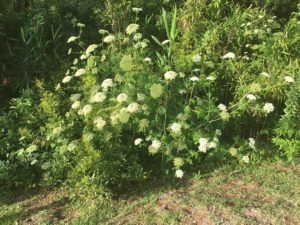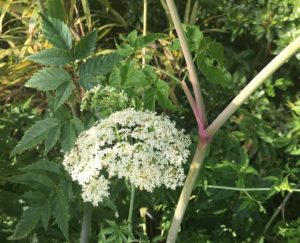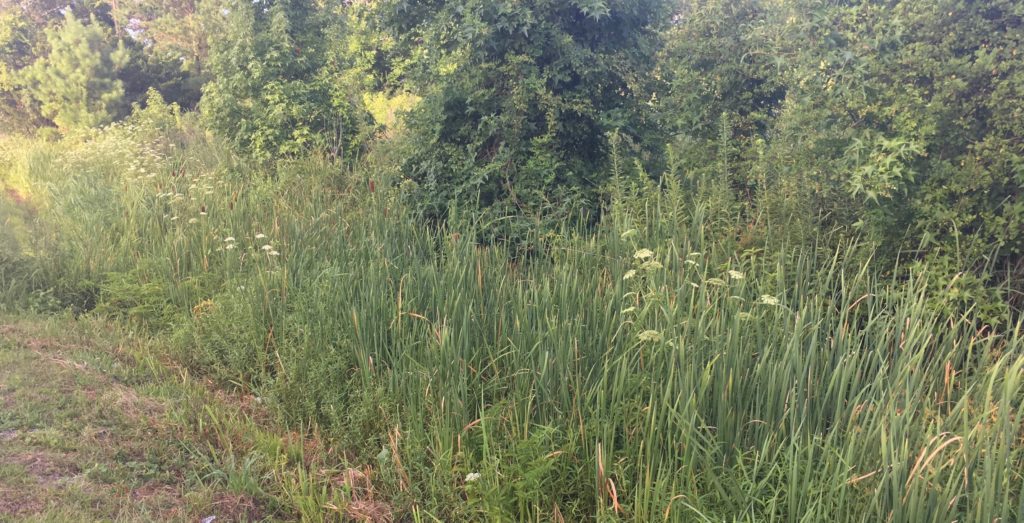NOT Giant Hogweed!
go.ncsu.edu/readext?613704
en Español / em Português
El inglés es el idioma de control de esta página. En la medida en que haya algún conflicto entre la traducción al inglés y la traducción, el inglés prevalece.
Al hacer clic en el enlace de traducción se activa un servicio de traducción gratuito para convertir la página al español. Al igual que con cualquier traducción por Internet, la conversión no es sensible al contexto y puede que no traduzca el texto en su significado original. NC State Extension no garantiza la exactitud del texto traducido. Por favor, tenga en cuenta que algunas aplicaciones y/o servicios pueden no funcionar como se espera cuando se traducen.
Português
Inglês é o idioma de controle desta página. Na medida que haja algum conflito entre o texto original em Inglês e a tradução, o Inglês prevalece.
Ao clicar no link de tradução, um serviço gratuito de tradução será ativado para converter a página para o Português. Como em qualquer tradução pela internet, a conversão não é sensivel ao contexto e pode não ocorrer a tradução para o significado orginal. O serviço de Extensão da Carolina do Norte (NC State Extension) não garante a exatidão do texto traduzido. Por favor, observe que algumas funções ou serviços podem não funcionar como esperado após a tradução.
English
English is the controlling language of this page. To the extent there is any conflict between the English text and the translation, English controls.
Clicking on the translation link activates a free translation service to convert the page to Spanish. As with any Internet translation, the conversion is not context-sensitive and may not translate the text to its original meaning. NC State Extension does not guarantee the accuracy of the translated text. Please note that some applications and/or services may not function as expected when translated.
Collapse ▲Recently there was a webinar on invasive plants in North Carolina. One of the plants highlighted was Giant Hogweed. All parts of Giant Hogweed are very toxic. The sap of the plant will cause burns if it comes in contact with the skin. Here in Carteret County, that webinar prompted several phone calls and a few emails about plants that are blooming now (mid-July) with white umbel flower heads.

Water Hemlock growing on a ditch bank
Water Hemlock, found here in Carteret County, reaches 4 to 7 feet in height, can be found growing on the ditch bank, has compound leaves and thick stems. All this is similar to Giant Hogweed except that Giant Hogweed reaches heights of 8 to 15 feet tall and the leaves are measured in feet not inches.
After going and taking a look at the plants in question and doing some research. The plants in both locations were identified to be water hemlock (Cicuta maculate). While this particular plant is poisonous if eaten, brushing up against it will not cause burns on the skin.
Here’s a few distinguishing characteristics from the U. S. Forest Service without being too technical:

Stems, leaves and flowers of Water Hemlock.
- The umbels of white flowers are at the tip of the stems and are slightly domed
- The leaves are two or three times pinnately compound (the leaf comes off the stem and branches two or three time) having a fern-like appearance.
- The veins in the leaves branch at the tip of the vein with one branch leading to the tip of the tooth on the leaf and the other leading to the base of the “V” between teeth.
- The stems may have some magenta (red) streaking but not spots.
There are several plants that have a similar appearance to Giant Hogweed growing wild here in Carteret County, but there has yet to be a sighting of the very dangerous Giant Hogweed here. The only known population of Giant Hogweed in North Carolina is in Watauga County in the mountains, so it’s unlikely that Giant Hogweed would be found in Carteret County. U. S. Fish & Wildlife Service has a list of six plants that look similar to Giant Hogweed. If a plant is seen that looks like giant hogweed, please us send pictures and the location of the plant.

Water Hemlock growing in a roadside ditch.




